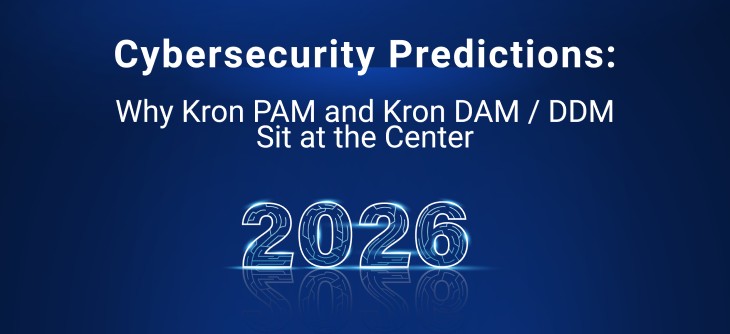
How to Prevent Privilege Misuse?
With the transfer of workflows to digital media as a result of the digital transformation, it is inevitable that the business world will face some cybersecurity challenges, especially those who adopted weak cybersecurity protocols. In other words, those not following the principles of least privilege and zero trust become easy targets for cyber attacks.
The attack factor that poses the highest risk for organizations vulnerable to becoming a target, and that leads to high costs as a result, is privilege misuse. If you don't properly plan what privileges and access authorizations should be granted to which users, you can become easy prey and a monetary resource for hackers.
Considering the fact that 80% of data breaches are caused by insiders, including current and former company employees, it is easy to understand how granting unnecessary privileges and access permissions can lead to serious issues. Besides, it's also worth mentioning that not revoking the access permissions and authorizations in a timely manner can make you vulnerable to malicious attacks, just as much as granting unnecessary privileges.
So, how can you prevent a cyber attacker from using the privileges on your IT network to create an attack vector?
What is Privilege Misuse?
Privilege misuse can be defined as the act of infiltrating into an IT network with the help of a privileged account to obtain organizations’ data stacks, seize confidential commercial assets, steal personal data, and make use of this data for profit and to attack organizations.
On an IT network, all authenticated standard user accounts will have standard authorizations - these are known as standard accounts. On the other hand, privileged accounts have more authorization and access levels. This authorization and access system can differ depending on the hierarchical structure of and within organizations.
Credentials are also important when it comes to privileged accounts and privilege misuse. As privileged accounts are mostly connected to credentials, they can be compromised when hackers target and attack these accounts. The Data Breach Investigation Report 2020 published by Verizon also reveals that the use of stolen credentials is the second most common type of data breach. The report shows that 80% of privilege misuse breaches can be attributed to lost and stolen credentials.
How Can Authorized Users Misuse Privileges?
Privileged users can misuse privileges in different ways. A privileged user can pose a threat to the data security principles of your IT network and access critical data stacks by performing the activities below. However, the user must have enough privileges in all situations to be able to do this.
- Account Manipulation
- Disabled Account Abuse
- Misuse of Service Account
- Misuse of Administrator Account
- Non-privileged Access to Privileged Accounts
- Privileged Account Abuse
- Privileged Asset Abuse
Among these, the most commonly preferred method is account manipulation. To cause access security breaches and obtain sensitive data, a cyber attacker can perform an activity normally done by users with administrator credentials with the help of the privileged account he used to infiltrate the system by changing the settings of the Active Directory.
Besides, attackers usually aim to run malicious software on systems when they use privileged accounts to launch attacks. This attempt to run malicious software is a serious threat against IT infrastructures and systems. It can lead to serious financial loss and damage the organization's relationship with customers as it causes all workflows of the organization to come to a halt.
Below, you can find a list of methods preferred by internal threat actors within organizations to access privileged account credentials. Internal threats usually follow these methods to access critical data.
- Guessing: An internal threat actor can guess weak passwords easily.
- Shoulder surfing: The cyber attacker monitors the user while he reveals credentials.
- Dictionary attacks: A list of possible passwords is created via automatic software, which is then used by the cyber attacker.
- Brute-force attack: An automatic software tries all possible password combinations for the relevant privileged account to gain access.
- Pass-the-Hash (PtH) attack: The hacker can pass the NT LAN Manager (NTLM) hash for authentication of the privileged account instead of using the real password.
- Credential stuffing: The attacker uses stolen or leaked credentials from former data breaches and sends automatic login requests to web sites to find out if these credentials are being used in different web sites.
- Password spraying: The cyber attacker detects common passwords like “12345678” in different accounts using software and tries to access these accounts.
Privilege Misuse with Statistics
The 2022 Verizon DBIR presents us with remarkable data in terms of privilege misuse. 173 total incidents stand out in the report, with 137 of them as confirmed data breaches. Highlighting the breach incidents of 2021, the report reveals that privilege misuse within the 137 confirmed breaches comes before stolen assets, which has 61 confirmed breaches. On the other hand, system intrusion is the biggest cause of privilege misuse and has become the leader of 2021, with 1545 confirmed data breaches.
Additionally, the report shows that healthcare organizations are affected most by privilege misuse incidents. The healthcare sector, with 29 confirmed breaches and 19% share, is followed by retail with 13.7%, and professional and manufacturing sectors with 13% each. While Finance has a share of 11.6%, organizations carrying out their businesses in the information sector constitute 8.9% of the incidents.
How to Prevent Privilege Misuse?
To prevent privilege misuse, you should first properly identify user roles and access profiles. Then, you should manage these roles and profiles according to the cybersecurity protocols of your IT network. In the meantime, you must advance the process by placing the zero trust principle at the center of your network’s security protocols. And then you must build an auditable process, which consists of privileged access granting, adding and cancelling steps as needed.
After completing the privileged access configuration of your IT network, you have three more steps to take:
- Monitor, analyze and manage privileged access roles continuously.
- Gain visibility of the IT network.
- Monitor and analyze user behaviors in real-time.
You can monitor privileged accounts 24/7 and build a strong control mechanism with Kron's Privileged Access Management (PAM) solution, Single Connect, which has proved its success many times over and got featured in reports published by international research organizations.
With the following modules, our Single Connect PAM solution can detect primarily privilege misuse by users with access to critical data and prevent misuse if needed:
- Privileged Session Manager
- Dynamic Password Controller
- Two-Factor Authentication (2FA)
- TACACS+ / RADIUS Access Management
- Database Access Manager and Dynamic Data Masking
- Privileged Task Automation
Contact our team to learn more about how to enhance your IT network with added security against privilege misuse with the help of Single Connect's modular structure and advanced features.



















